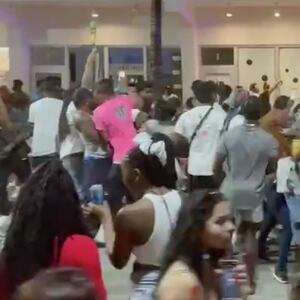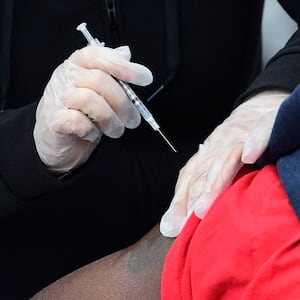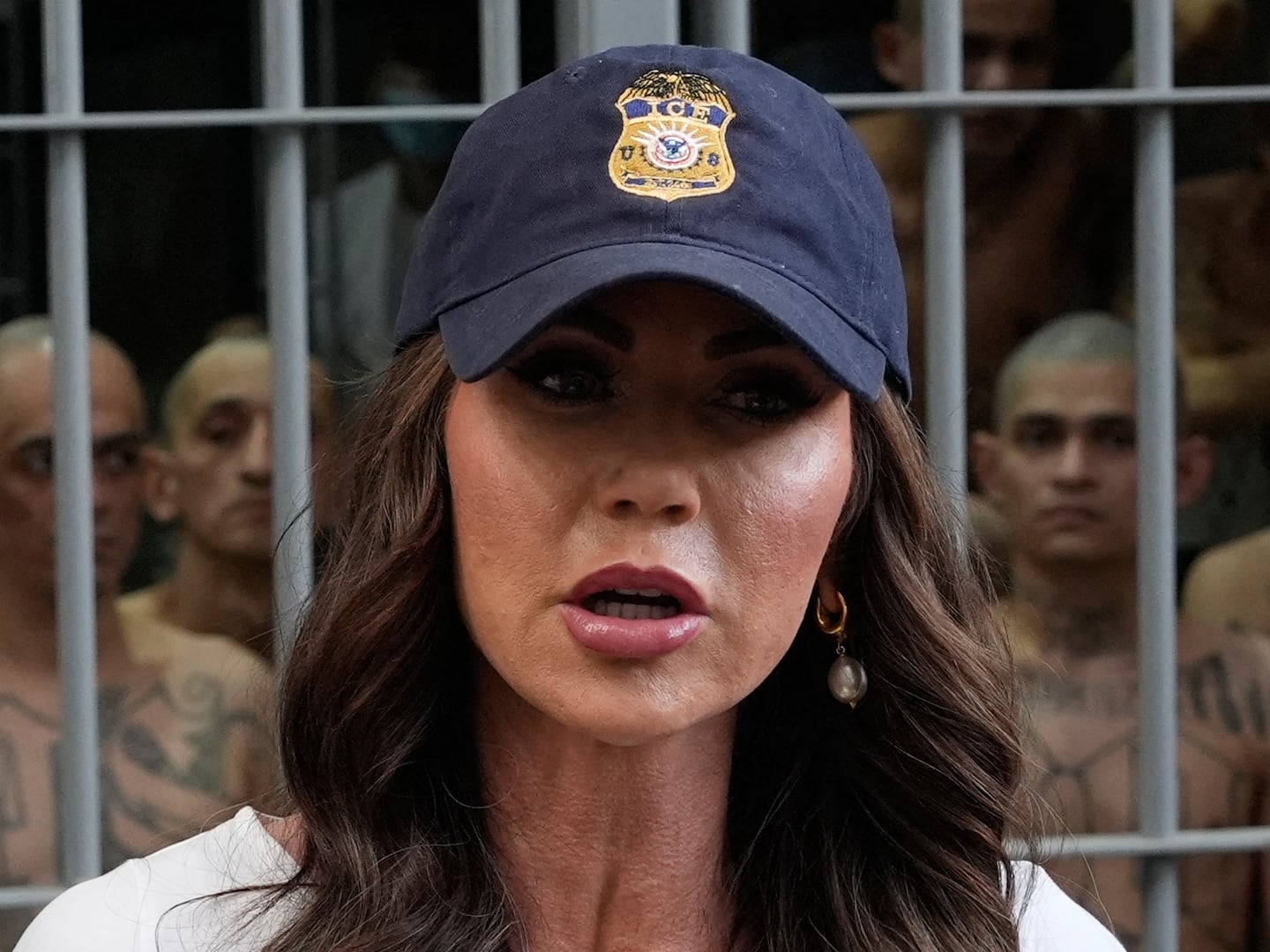Florida is ramping up vaccinations as a dangerous new variant of the novel coronavirus spreads across the state. Of course, some epidemiologists are confident safe and effective vaccines will cut off the spread of the U.K. or B.1.1.7 variant, also known as a coronavirus “lineage.”
Others aren’t so sure. The X-factor? Potentially hundreds of thousands of Spring Breakers who have been converging on the state of 21 million—a state with no mask mandate, no capacity rules, and no sign of government oversight.
Welcome to Rabbit Hole, where we dive deep on the biggest story. It’s for Beast Inside members only. Join up today.
It’s a critical time for the Sunshine State, which under the leadership of GOP Gov. Ron DeSantis has faced criticism for its alternately slow and anti-science response to the pandemic. Still, the situation has improved there in recent weeks, as it has in much of the country.
“It’s a good time to see a little light at the end of the tunnel,” Jason Salemi, a University of South Florida epidemiologist, told The Daily Beast.
But Florida is still in the tunnel, Salemi stressed. “I’m particularly concerned about Spring Break,” he added. Partiers are arriving as the state further loosens restrictions, B.1.1.7 becomes dominant, and vaccines remain off-limits for most Floridians.
Spring Break crowds have begun to reach critical mass across the South—but especially in Florida. “We’re packed from the time we’re open until the time we close,” Sydney, the manager of breakfast joint Bacon Bitch in Miami Beach, told The Daily Beast on Saturday.
College partiers aren’t the only new arrivals. They share indoor spaces with aerosols carrying a more easily spread variant of the novel coronavirus
The B.1.1.7 lineage of the novel coronavirus first appeared in the United Kingdom last fall, and has since spread all over the world. It includes a key mutation geneticists call N501Y. The mutation affects the spike protein that helps the virus grab onto and enter our cells. It seems N501Y makes the spike protein “grabbier”—and thus makes the pathogen more transmissible.
We’re still learning about B.1.1.7. And the more we discover, the scarier the new lineage looks.
“There is a pattern of mutations in B.1.1.7 that is especially worrying because three mutations may be cooperating to increase fitness by speeding up replication,” David Ostrov, a professor in the Department of Pathology, Immunology and Laboratory Medicine at the University of Florida College of Medicine, told The Daily Beast.
In other words, B.1.1.7 is already easy to spread compared to older forms of the novel coronavirus. Also noteworthy: Early evidence cited by the British government points to it being deadlier, too.
Florida has one of the highest proportions of B.1.1.7 of all U.S. states. The lineage now accounts for half of Florida’s new COVID-19 infections, according to California genomics firm Helix. The state has reported around 4,500 new infections daily in recent days—down from a January peak of nearly 16,000 new cases in a single day. In all, Florida has registered around 2 million COVID cases and 32,000 deaths.
Like other states, Florida is vaccinating residents at an accelerating rate. The state has dosed 4 million people; 1.8 million have received the first shot of a two-shot vaccine, and 2.2 million have been fully vaccinated with either a one- or two-dose jab.
But it’s not clear all those vaccinations can halt the march of B.1.1.7 and prevent a possible spike in cases as Spring Breakers pack bars, restaurants, and hotels. That’s in part because Florida has prioritized its senior population for vaccination at the expense of younger people and workers who account for most of the virus’ spread.
Seniors are uniquely vulnerable to SARS-CoV-2. According to figures from the U.S. Centers for Disease Control and Prevention, an 85-year-old with COVID is 80 times more likely to require hospitalization than a 17-year-old—and 7,900 times more likely to die.
Prioritizing seniors saves lives. But that also allows the virus to continue spreading wherever younger people work or hang out. And that spread prolongs the risk not just to younger people, but to everyone else, too.
All states have struggled to strike a balance in their vaccination strategies. The choices are to save lives now at the risk of extending the pandemic, or end the pandemic sooner but lose more seniors in the short term.
Florida has opted for the former. Right now, the state is reserving its allotments of vaccines for people 65 and older and some first-responders and teachers 50 and older, along with those dealing with preconditions. The minimum age drops to 60 starting on Monday.
Compare that to nearby South Carolina, where much larger swaths of the population are eligible for vaccination. The Florida Department of Health did not respond to a request for comment.
The Sunshine State isn’t alone in dosing its seniors first. But it does stand apart as a Spring Break destination. So while Florida withholds jabs from its younger population, that younger population is getting a lot bigger—and mixing it up at bars—at the same time B.1.1.7 becomes the dominant lineage in the state.
That worries Cindy Prins, a University of Florida epidemiologist. “I’d like to see us open up eligibility a little more,” Prins told The Daily Beast of the vaccine rollout at this key moment.
It doesn’t help that DeSantis lifted all statewide restrictions on businesses way back in September, and just this week canceled any fines city and country governments had imposed in their efforts to enforce their own local restrictions, which were already effectively unenforceable.
Florida is wide open, B.1.1.7 and vaccine-restrictions be damned. So far, the state has gotten lucky. Despite the lack of safeguards, new infections, hospitalizations, and deaths are dropping—and fast.
But those gains are less impressive than they might appear at first. The decline in cases since the January peak has gotten Florida back to where it was at the start of November. The infection rate is still twice as high as it was in the early fall.
Only time will tell if the unholy duo of B.1.1.7 and Spring Break spread COVID faster than increasing vaccinations can suppress it.
If the virus wins, America could be in for another spike in infections as new lineages become as prevalent in other states as B.1.1.7 is in Florida. If the vaccine wins, it’s a good sign for other states that might be wide open like Florida—but aren’t overrun by hundreds of thousands of hard-partying college kids.
Edwin Michael, an epidemiologist at the Center for Global Health Infectious Disease Research at the University of South Florida, told The Daily Beast he’s optimistic. “So far things are looking good, provided that we keep social measures in place,” he said.
But at this point, social measures are mostly voluntary in Florida. That means it’s up to individuals to protect themselves and the people around them while the lineage problem shakes out.
“We still need to be doing the prevention measures,” Mary Jo Trepka, a Florida International University epidemiologist, told The Daily Beast. “Wearing masks and staying physically distant and not doing large gatherings.”
What price Floridians—and Americans—will pay for Spring Breakers who refuse to mask up and avoid crowds, even as the U.K. variant surges, remains to be seen.








